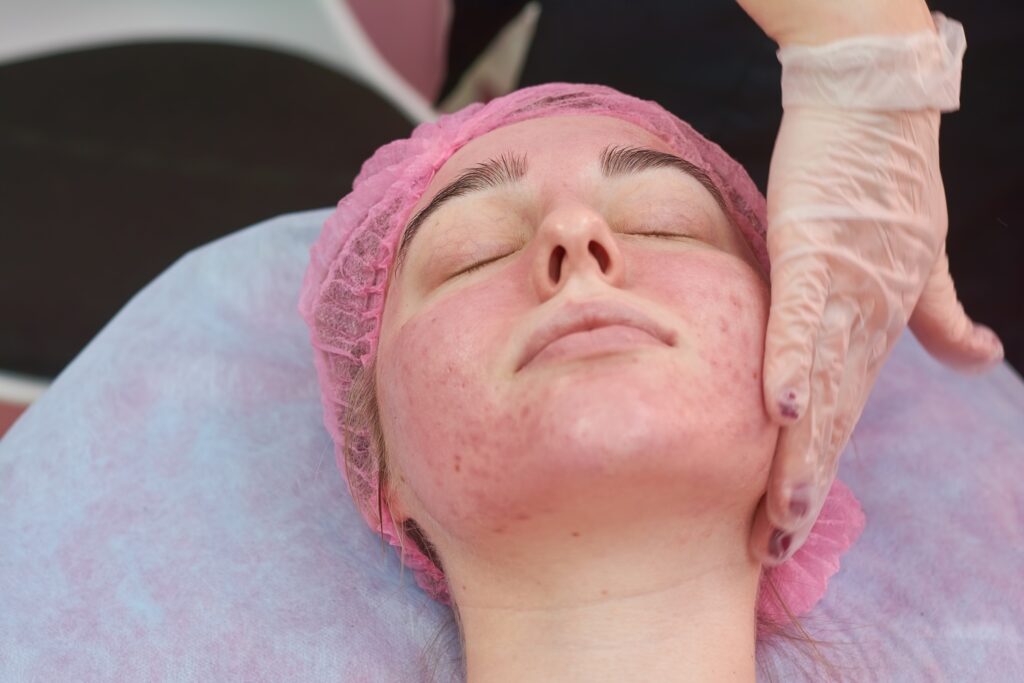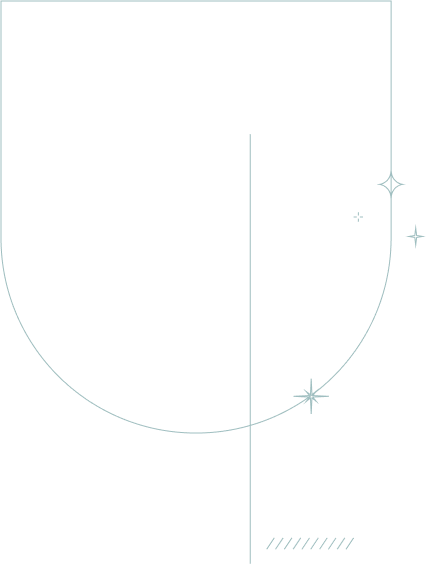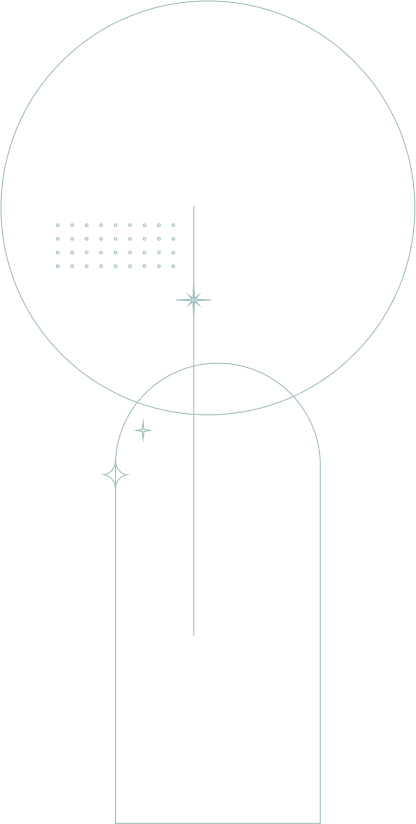
Redness, inflammation, and pustules are three common symptoms of rosacea that are difficult to miss. These symptoms are unbearable both physically and mentally, mostly impacting a person’s self-esteem. People with rosacea must understand their symptoms and triggers and know how to manage them effectively.
Part of understanding rosacea is learning its four stages: pre-rosacea, mild, moderate, and severe. Each stage has its level of severity, intensity of symptoms, and specific treatment regimen.
Why Is Understanding The Four Stages of Rosacea Important?
Rosacea is a chronic skin condition with four distinct stages. All patients start with minor issues, which eventually progress as the symptoms worsen or become out of control. Let’s examine each stage closely.
Stage 1 – Pre-Rosacea (Early Rosacea)
Is your skin flushing because of the heat, or is it rosacea? During the pre-rosacea stage, your skin may look pinkish to reddish and feel warm, but only when triggered by certain situations, foods, or products. The redness is visible along your forehead, nose, cheeks, and chin and is caused by dilated blood vessels. But once the trigger is no longer present, the redness disappears.
Common Triggers
- Exposure to UV rays and extreme temperatures (hot and cold)
- Eating spicy or hot foods
- Drinking hot beverages such as coffee or tea
- After strenuous exercise
- Stress
Preventive Measures and Basic Skincare Tips
You can avoid pre-rosacea symptoms by following these tips:
- Wear high-SPF sunscreen even when you’re not going outdoors.
- Use gentle skincare products created for sensitive skin. Avoid exfoliants.
- Cover up during cold or hot weather.
- Avoid triggers and manage stress effectively.
Stage 2 – Mild Rosacea (Persistent Redness)
In mild rosacea, the redness that appears when exposed to triggers lingers longer than before. Redness and flushing may occur for an hour after the trigger disappears. Blood vessels on the skin are more visible. There is also mild irritation and swelling.
Suitable Treatments
A dermatologist may prescribe topical medications to help control irritation and redness. They may also recommend laser therapy to target and shrink visible blood vessels.
Lifestyle adjustments are critical to controlling mild rosacea symptoms. These include avoiding all triggers (extreme temperatures, stress, food and beverages that trigger symptoms, etc.) and practising gentle skin care regimens.
Stage 3 – Moderate Rosacea (Papulopustular Rosacea)
Symptoms of moderate rosacea last for days or weeks, even after triggers have been removed. The redness and bumps are permanently visible on the cheeks, forehead, chin, and nose as the capillaries persistently dilate. The bumps group together and may form pustules (elevated and filled with pus) that resemble acne. There’s swelling, inflammation, and irritation. The affected skin may become severely damaged.
Consult a dermatologist for rosacea symptoms lasting for weeks, accompanied by severe irritation and pustule formation. A dermatologist will conduct checks and ask for your health history to understand your symptoms and provide the best treatment to control moderate rosacea.
Suitable Treatments
Treatments for moderate rosacea include topical medication to control redness and irritation. Topical ivermectin when used in conjunction with low-dose tetracycline antibiotics reduces inflammation, while topical brimonidine can temporarily reduce redness by constricting blood vessels however most patients experience a significant rebound so lasers and BBL is always preferable to this.
Dermatologists also use laser and light-based therapies to shrink dilated blood vessels, improving redness.
Stage 4 – Severe Rosacea (Phymatous Rosacea)
Symptoms have become severe at this stage, with skin thickening, enlarged pores, and irregular skin texture. The skin along the nose becomes thick and swollen, making the nose look larger (rhinophyma). The pustules have become extreme and often last longer than moderate rosacea.
When facial blood vessels are significantly damaged, fluids and proteins leak into the surrounding tissues, changing the skin’s shape, texture, and tone.
Suitable Treatments
Management of severe rosacea symptoms may become complicated. Dermatologists may recommend advanced laser treatments such as the following:
- Pulse Dye Laser (PDL): PDL controls symptoms by collapsing dilated blood vessels. It uses an organic dye in a solvent with a specific light wavelength to reduce redness and inflammation.
- Broadband Light (BBL): This widely used light treatment uses non-laser light to target dilated blood vessels and pigmented skin.
- Nd:YAG Laser: This type of laser has the best wavelength to target vascular lesions and redness. Nd:YAG Laser reaches deeper vascular tissues and is often combined with other therapies to treat severe rosacea
- Resurfacing laser with CO2 or Erbium: This is to remove the bulky, phymatous skin.
Patients with severe rosacea also need medication to control inflammation. These include topical brimonidine, azelaic acid, and metronidazole. Oral medications such as antibiotics (doxycycline and minocycline) are also prescribed to prevent and treat inflammation and to control acne-like lesions. Isotretinoin may also be prescribed for severe rosacea. This medication can only be prescribed by a dermatologist.
Contact Dr Ritu and her specialised clinical staff at Dr Refresh for immediate consultation of severe rosacea symptoms.
Special Consideration – Ocular Rosacea
Rosacea, which affects the eyes and the skin surrounding the eyes is called ocular rosacea. This develops in people with rosacea, and symptoms include redness, burning, and severe itching of the eyes. Other symptoms of ocular rosacea include:
- Redness, burning, and itching of the eyes
- Dry or watery eyes
- The feeling of having something in your eyes
- Sensitivity to light
- Blurred vision
- Red and swollen eyelids
- Dilated blood vessels along the white part of the eye
- Recurrent infections of the eyes or eyelids, such as conjunctivitis, styes, blepharitis, etc.
Signs and symptoms of ocular rosacea may appear before, during, or after the development of rosacea symptoms. They may also occur independently and may be of a different severity than skin symptoms.
Suitable Treatments
As with skin rosacea, people with ocular rosacea must avoid triggers and practice gentle skin care, especially of the skin surrounding the eyes. They must also practice a good eye care routine and avoid contact lenses, especially during flare-ups. The good news is that skin treatments usually help with ocular rosacea.
Oral antibiotics and eye medications may be prescribed to control symptoms, prevent dryness, and reduce discomfort.
When Should You See a Dermatologist?
Consult a dermatologist for all stages of rosacea, not just when symptoms become intense or severe.
- Pre and Mild Rosacea: Consult a dermatologist when symptoms such as redness and irritation persist, especially when triggers have disappeared. Consulting this early can help prevent worsening symptoms and avoid further damage to facial blood vessels.
- Moderate Rosacea: Talk to a dermatologist about managing and treating pustules and acne-like symptoms. Visiting your dermatologist at this stage helps control symptoms and avoid skin infections and severe damage to the skin.
- Severe Rosacea: Consultation is critical at this stage to prevent further damage to the skin and control severe symptoms.
Dr Refresh has years of expertise in treating all stages of rosacea, ensuring patients receive timely care to avoid complications and worsening conditions. Dr Ritu and her specialist clinical staff provide tailored skincare, prescription and laser solutions that fit your needs, prioritising your well-being at every step of the treatment process.
How Dr Refresh Helps Manage All Rosacea Stages
Dr Refresh provides personalised treatment plans for rosacea. Every patient is unique, with specific symptoms requiring personalised and compassionate care.
Our patients receive professional symptom management, which includes early intervention to preserve skin health and control mild symptoms. Advanced-stage treatments are also available for patients with moderate to severe symptoms, helping them prevent future breakouts and avoid worsening conditions.
If you have questions about rosacea treatment, schedule a consultation with Dr Ritu or her specialist clinical staff to discover how we can help. Call the Dr Refresh team at (02) 8014 6500 to book a consultation. Alternatively, you can also enquire and book online.
Frequently Asked Questions About Rosacea Stages
1. Does everyone with rosacea go through all four stages?
No, not everyone with rosacea goes through all stages. Some may only experience mild symptoms, while some may progress to severe stages as their symptoms worsen.
2. Can early intervention stop rosacea progression?
Yes, early intervention and consultation with a dermatologist can stop the progression of rosacea. Applying the correct treatments, practicing gentle skin care, and avoiding triggers can also help.
3. Are certain rosacea stages reversible?
Rosacea stages are irreversible, but treatments are available to control symptoms in different stages of this skin condition.
4. Can skincare routines reduce rosacea symptoms?
Yes, gentle skincare routines, such as using products for sensitive skin, avoiding harsh products such as exfoliants, and applying sunscreen, can help reduce symptoms.
5. Is severe rosacea treatable without surgery?
Oral and topical medications, laser and light therapies, and lifestyle adjustments may manage severe rosacea symptoms without surgery.

